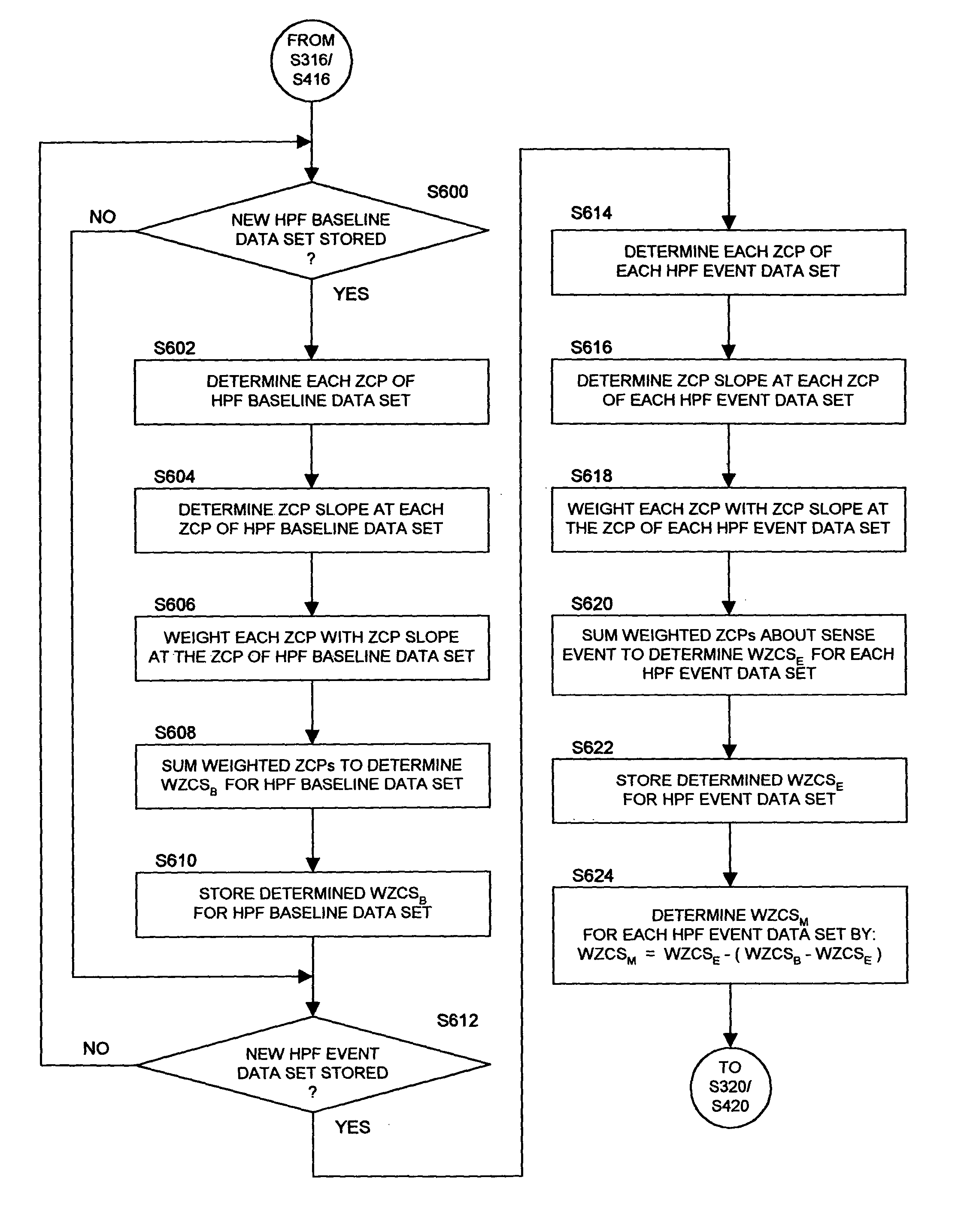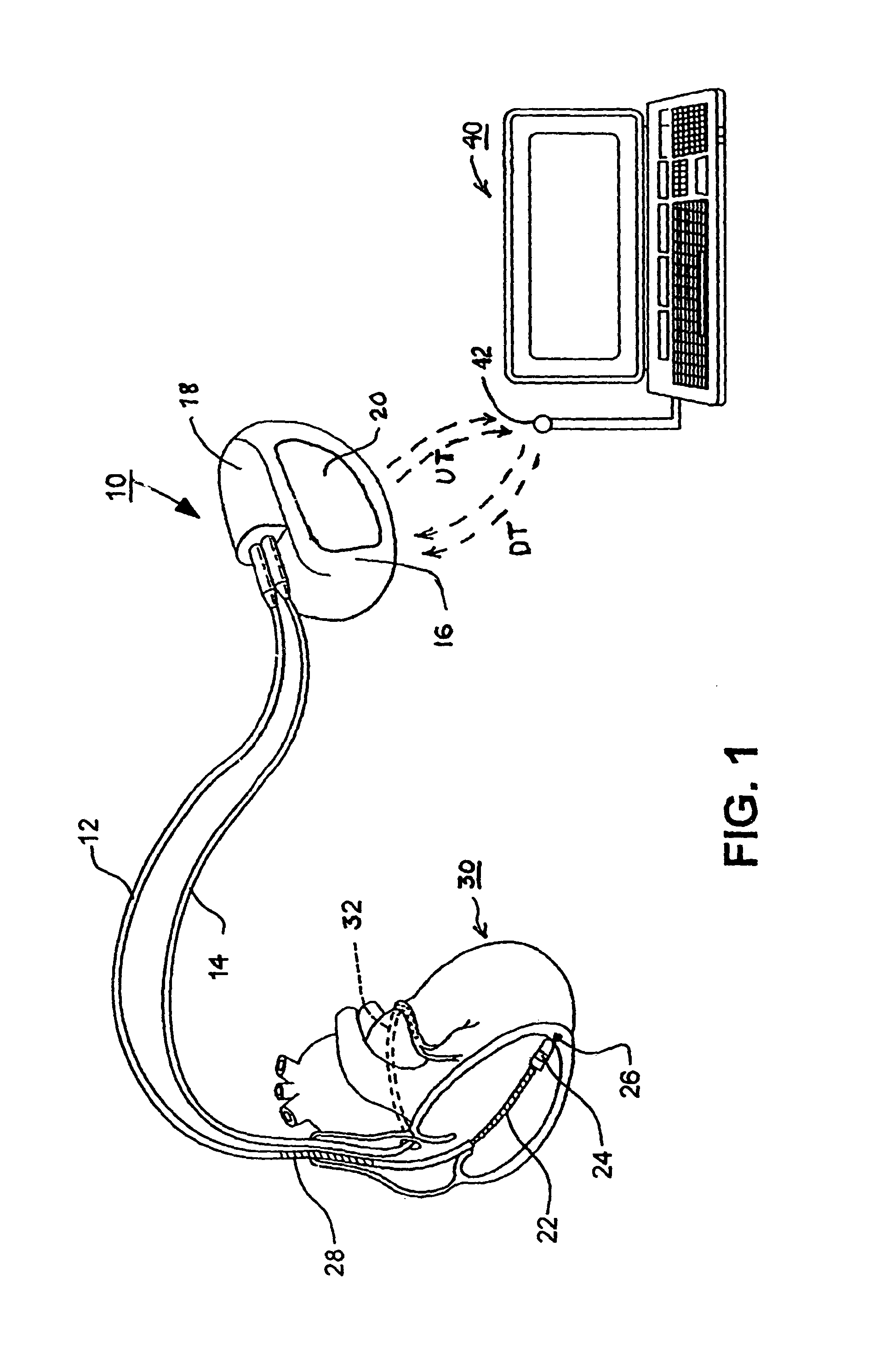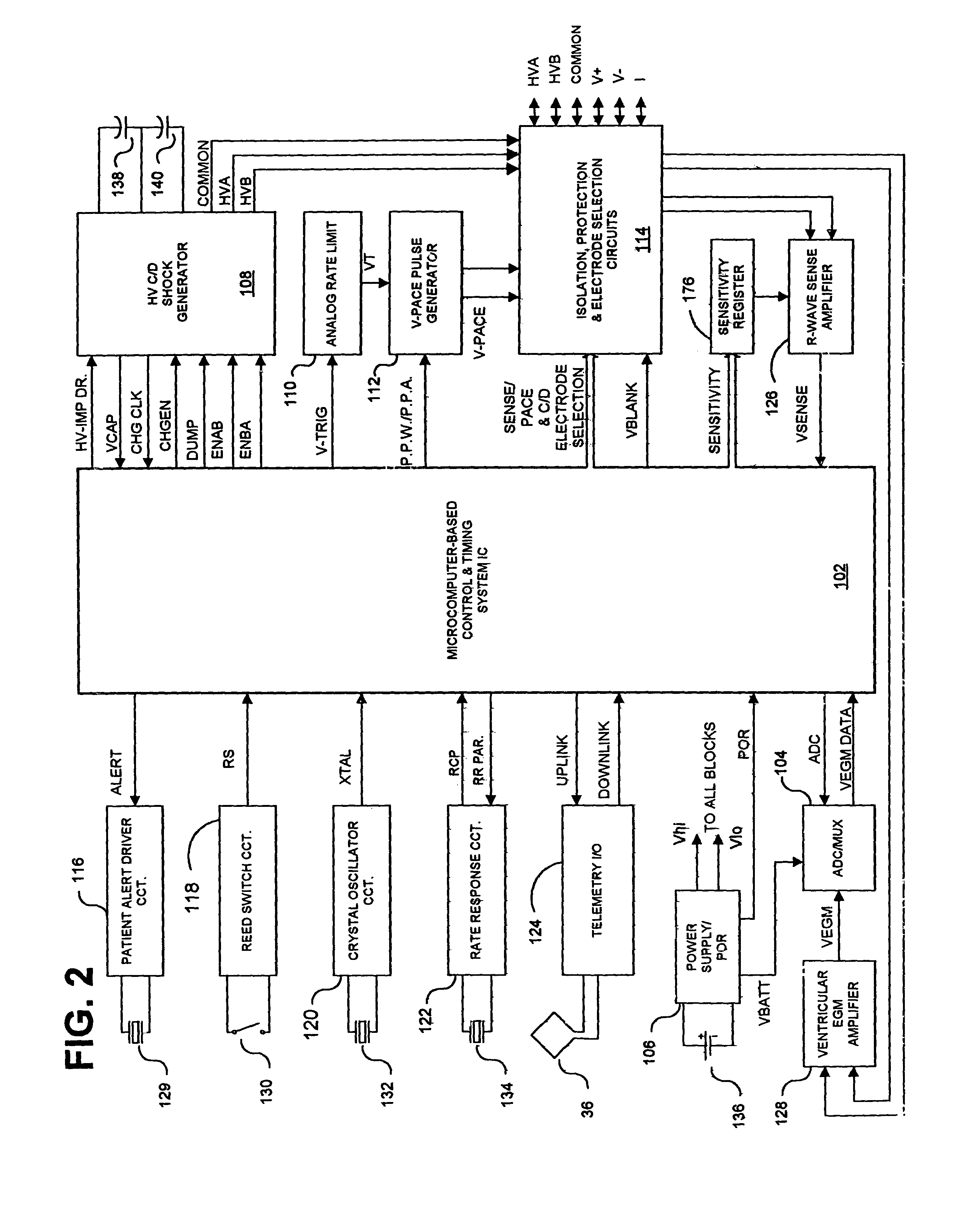Methods and apparatus for discriminating polymorphic tachyarrhythmias from monomorphic tachyarrhythmias facilitating detection of fibrillation
a polymorphic tachyarrhythmia and monomorphic tachyarrhythmia technology, applied in the field of implantable medical devices, can solve the problems of insufficient use of pdf and phase lock loop, failure false declarations of vf, and inability to detect true vf episodes. the effect of detecting fibrillation
- Summary
- Abstract
- Description
- Claims
- Application Information
AI Technical Summary
Benefits of technology
Problems solved by technology
Method used
Image
Examples
Embodiment Construction
[0047]In the following detailed description, references are made to illustrative embodiments of methods and apparatus for carrying out the invention. It is understood that other embodiments can be utilized without departing from the scope of the invention. In particular, the present invention is described in the context of a simple single chamber ICD for providing the functions of monitoring the ventricular EGM, detecting VF, ST, and SVT, discriminating VF from VT and SVT, and providing a C / D shock in response to a detected VF episode, storing data related to detected VF, VT and SVT episodes for uplink telemetry transmission to external medical devices, and optionally providing VVI pacing for bradycardia. The preferred embodiment can advantageously be simplified to function as a prophylactic ICD without pacing capabilities that provides unsynchronized, high energy, C / D shocks upon detection of VF episodes in anticipation that the patient will thereby survive such VF episodes and be ...
PUM
 Login to View More
Login to View More Abstract
Description
Claims
Application Information
 Login to View More
Login to View More - R&D
- Intellectual Property
- Life Sciences
- Materials
- Tech Scout
- Unparalleled Data Quality
- Higher Quality Content
- 60% Fewer Hallucinations
Browse by: Latest US Patents, China's latest patents, Technical Efficacy Thesaurus, Application Domain, Technology Topic, Popular Technical Reports.
© 2025 PatSnap. All rights reserved.Legal|Privacy policy|Modern Slavery Act Transparency Statement|Sitemap|About US| Contact US: help@patsnap.com



